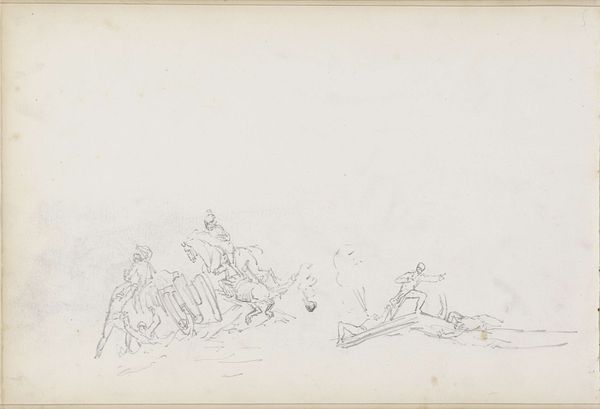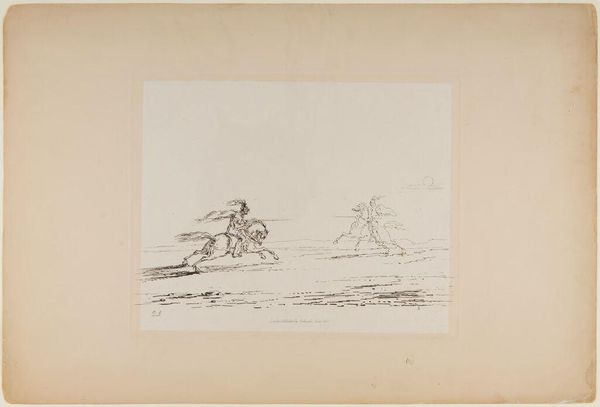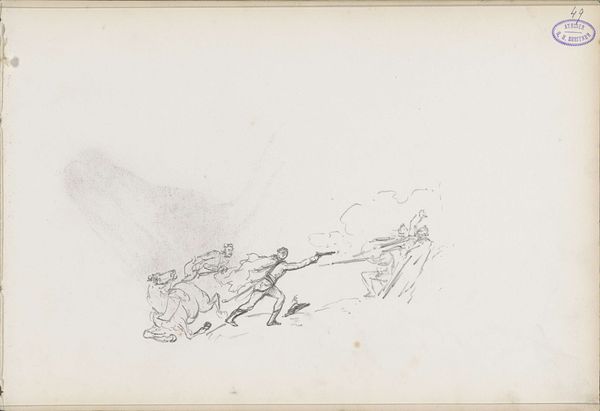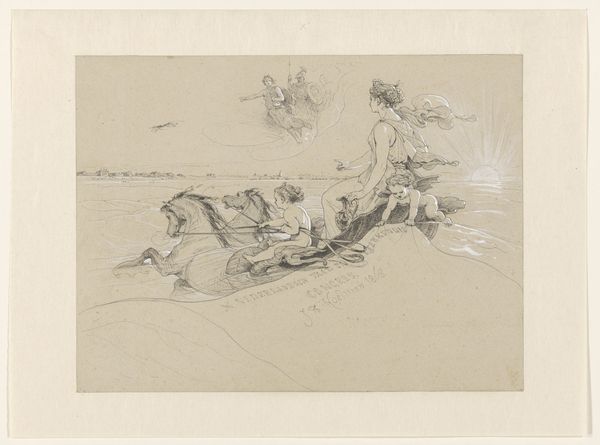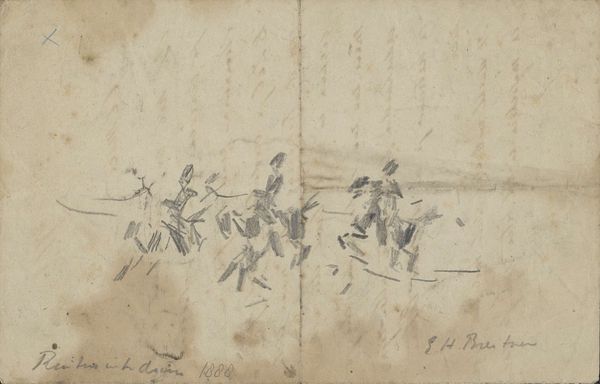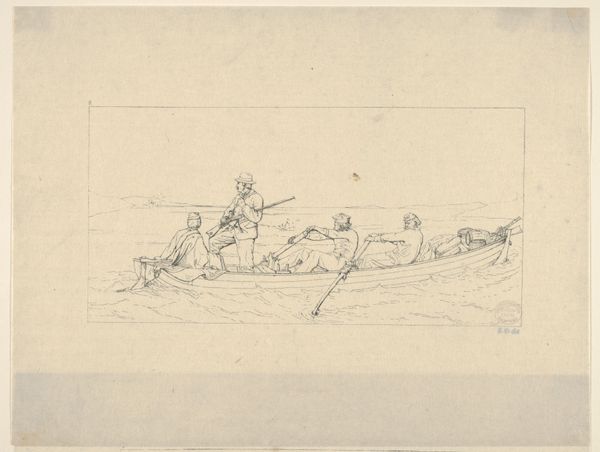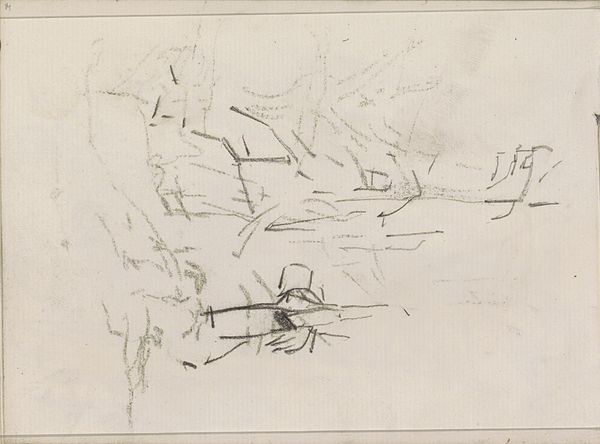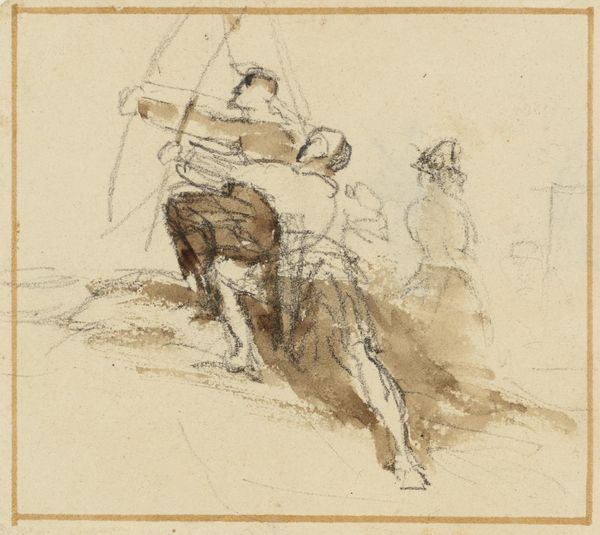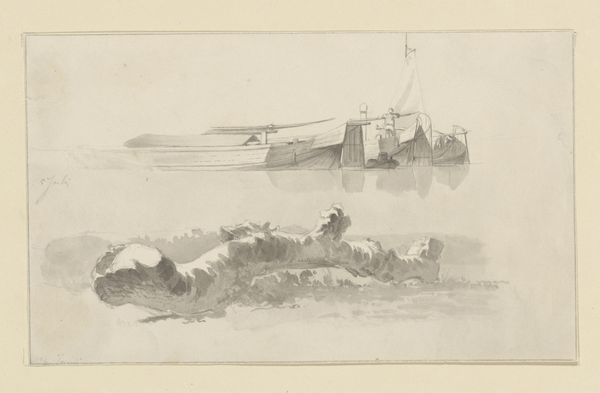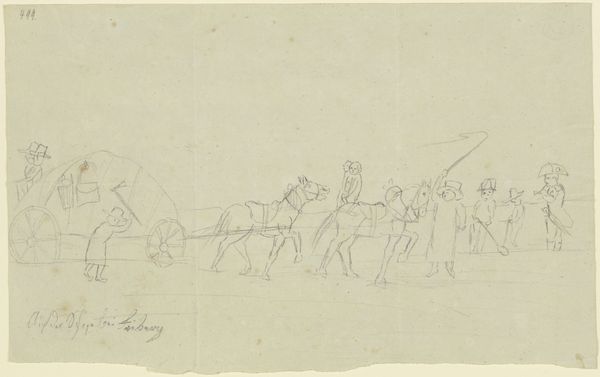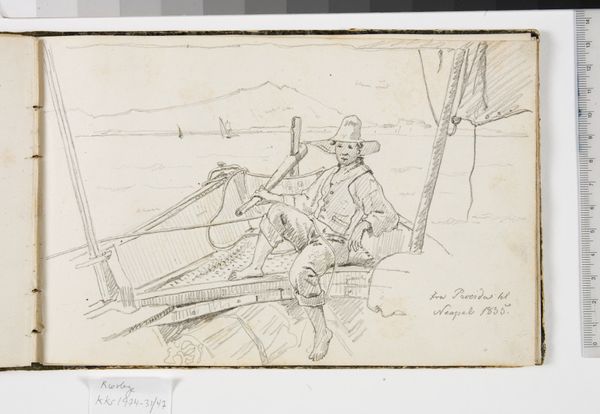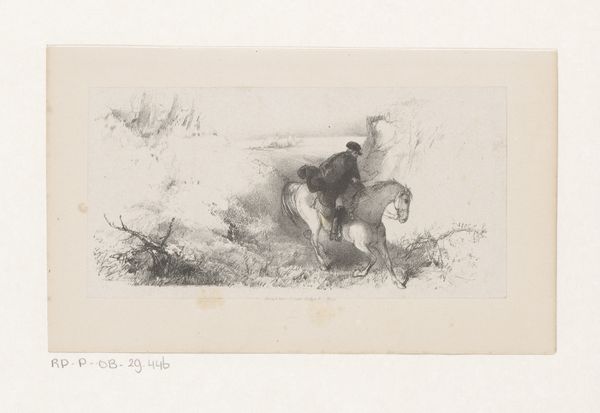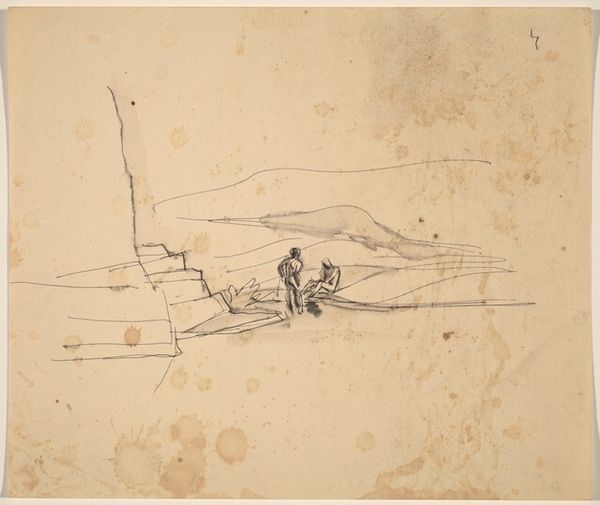
En slæde set fra oven, der trækkes af en hest, med to siddende personer og en stående ved siden af, alle set bagfra 1897
0:00
0:00
drawing, pencil
#
drawing
#
landscape
#
pencil
Dimensions: 261 mm (height) x 421 mm (width) (bladmaal)
Editor: We’re looking at Ferdinand Kjerulf Tranaas's "A Sledge Seen from Above, Drawn by a Horse, with Two Seated People and One Standing Beside, All Seen From Behind," a pencil drawing from 1897. It’s a study of a winter scene, mostly shades of grey. What strikes me most is the perspective – almost like we're floating above the scene, looking down. How do you interpret this work? Curator: It's fascinating how Tranaas uses that elevated perspective to emphasize the relationship between people, animal, and landscape. Consider the cultural context: horse-drawn sledges were vital for winter transport in late 19th-century Scandinavia. By showing them from above, he almost democratizes the view, removing social hierarchies often seen in depictions of travel. It’s not a heroic journey; it’s an everyday scene, observed. How does this inform your view of public art? Editor: That's interesting. It does feel like a snapshot, a moment in time accessible to everyone. I hadn’t thought about how perspective impacts our understanding of social dynamics. But it also feels quite solitary. Is that reading supported historically? Curator: Precisely. While the figures are together, they’re also distanced – both from us and from each other. That isolation reflects a broader anxiety of modernity – the tension between communal life and individual experience, which manifested across Europe at the time. Do you notice any specific compositional elements contributing to that feeling of isolation? Editor: I think it's the vast, empty space surrounding the group and the almost complete lack of detail, the stark white acting as a void. Curator: Exactly. That minimalist approach highlights not just the physical isolation but the emotional distance. How different this feels compared to grand Romantic landscapes of the earlier 19th century, which showed the power of Man dominating the sublime! What have you gained from examining this drawing and discussing these aspects? Editor: I hadn't initially considered the broader cultural context, how a simple drawing could reflect anxieties around modernization and individual identity within society. Curator: And I hadn't thought about how the absence of color contributes to this specific depiction of isolation, emphasizing the subdued realities of 19th-century life. Thanks to your observations, I see this work with a fresh perspective.
Comments
No comments
Be the first to comment and join the conversation on the ultimate creative platform.
